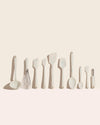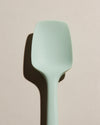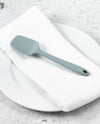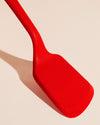
Baking a ham is a time-honored tradition for many families during festive gatherings. Whether it's for a cozy Christmas dinner or an elaborate Easter ham, this beautifully baked, succulent meat can be the star of your holiday meal.
This post will guide you through the process of baking a ham, especially if it's your first time. We'll discuss everything from choosing the right type of ham to crafting a tantalizing glaze that will have your guests asking for seconds.
How To Choose the Right Ham
The first step in baking a ham is to choose the right type. There are several types of ham available on the market, each having its unique characteristics. Bone-in hams are known for their flavor, while spiral hams are pre-sliced for convenience.
Fully cooked hams are ready to eat but can also be baked for added flavor. Smoked hams provide a rich, smoky undertone that many people love. Boneless hams are easy to slice, and spiral-cut hams offer the best of both worlds. Whole hams are perfect for large gatherings, while half hams are suitable for smaller families.
It's also important to understand the cut side of the ham, which is the flat side where the ham was cut away from the bone. This side should always be placed face down in the cooking vessel for optimal baking.
If it's your first time baking a ham, don't be intimidated. Consider who you're serving and what flavors they prefer. Keep in mind the size of your gathering to choose the best ham for your holiday meal.
What Tools and Ingredients Do You Need for Ham?
Next, let's talk about the tools and ingredients you'll need. A roasting pan is essential for baking the ham, and aluminum foil will help retain moisture and prevent over-browning.
A meat thermometer is crucial to ensure your ham is cooked to the correct internal temperature.
For the ham recipe, you'll need a ham of your choice and ingredients to create a tantalizing glaze. The glaze recipe typically includes brown sugar for sweetness, pineapple juice for a bit of tang, dijon mustard for a touch of heat, and maple syrup or honey for a rich, earthy flavor. Some people also like to add a bit of orange juice for a citrusy twist.
As for side dishes, ham pairs wonderfully with a variety of options. Green beans sautéed with a touch of garlic, or a hearty bean soup, can complement the flavors of your baked ham, making your holiday meal even more special.
What To Know About Ham Preparation and Cook Time
Once you've chosen your ham and gathered your tools and ingredients, it's time to start the baking process. Preheat your oven as per the instructions on the ham package. This usually falls around 325 degrees F, but it can vary based on the specific ham type and weight.
Place your ham cut side down in a roasting pan or a baking dish. This position helps the ham cook evenly and retain its juices, leading to a more flavorful result.
The prep time for baking a ham is relatively short, mostly involving scoring the ham and preparing the glaze. However, the total time, including baking, can range from a few hours to half a day depending on the size and type of your ham.
One crucial aspect of baking ham is ensuring it reaches the correct internal temperature. According to the USDA, the ham should reach an internal temperature of 145 degrees F followed by a three-minute rest time. Measure this with a meat thermometer inserted into the thickest part of the ham without touching the bone.
Should You Glaze and Baste a Ham?
The hallmark of a delicious baked ham is its glaze. Start by combining the brown sugar, pineapple juice, dijon mustard, and maple syrup or honey in a saucepan. Simmer until it thickens into a glaze.
Basting involves spooning the glaze over the ham during the baking process, which adds flavor and aids in developing a delightful, caramelized exterior. Begin basting the ham during the last 45 minutes to an hour of baking to prevent the sugar in the glaze from burning.
Once the ham has reached the correct internal temperature, remove it from the oven and let it rest before carving. This rest period lets the juices redistribute throughout the ham, resulting in a moister and more flavorful dish.
Whether you're making a glazed ham or a honey-baked ham, remember: patience is key to achieving the perfect finish.
What Are Some Other Ways To Bake a Ham?
While the traditional oven-baked ham is a classic, there are several other methods you can use to bake a ham, depending on your preferences and available equipment.
Here are some alternative ways to prepare your holiday ham:
Slow Cooker Ham
If you prefer a hands-off approach, a slow cooker or crock pot is a great way to bake your ham. This method is perfect for a spiral-sliced or pre-cooked ham. Simply place the ham in the slow cooker, cover it with your glaze, and let it cook on low for 4-6 hours. The slow, steady heat lets the flavors meld together beautifully, resulting in a tender, juicy ham.
Glazed Ham in Aluminum Foil
To keep your ham moist and juicy, you can bake it wrapped in aluminum foil. Place your ham on a piece of foil, score the surface, apply the glaze, and wrap it tightly. The foil will lock in the moisture and infuse the ham with the flavors of the glaze.
Bake as per your recipe's instructions, opening the foil for the last 30 minutes so the outside can caramelize.
Smoked Ham
If you have a smoker, you can use it to add a rich, smoky flavor to your ham. This method works best with a bone-in ham. Prepare your smoker according to its instructions, then smoke the ham at 225 degrees F until it reaches an internal temperature of 145 degrees F. You can also add a glaze during the last hour of smoking for an extra layer of flavor.
Ham in a Roasting Bag
A roasting bag can also be used to bake your ham. This method is similar to the foil method, but a roasting bag can help to more evenly distribute the heat. Simply place the ham and glaze inside the bag, then bake as per your recipe's instructions.
Each of these methods has its unique benefits and can result in a delicious baked ham. The best method for you will depend on your personal preferences, the type of ham you're using, and the equipment you have.
Serving and Leftovers
After the resting period, your baked ham is ready to be served as the main dish for your Christmas dinner or Easter dinner. Carve the ham into slices and serve with your prepared side dishes. A well-baked ham is a sight to behold, and its taste is even more impressive.
But what about the leftovers? Well, ham is a gift that keeps on giving. You can reheat leftover ham for a quick and delicious meal, or use it in a variety of other recipes.
For example, leftover ham can be used to make a slow cooker ham and bean soup. Simply add the ham bone to a slow cooker with some beans, vegetables, and seasoning, and let it cook until everything is tender and flavorful.
What Is the Nutritional Information for a Baked Ham?
A baked ham isn't just delicious — it's also packed with essential nutrients. Ham is a good source of protein, and it also provides some carbohydrates. It does contain cholesterol, but it also offers beneficial minerals like potassium and calcium. If you use orange juice in your glaze, it could also provide some vitamin C.
However, like all foods, ham should be consumed in moderation. While it's a tasty component of a holiday meal, remember to balance it with plenty of vegetables and other healthy side dishes.
The Takeaway
Baking a ham may seem daunting, especially if it's your first time, but with the right guidance and a bit of patience, anyone can do it.
At GIR, our mission is to "Get It Right." We offer a range of reimagined kitchen tools that bring a new level of quality and functionality to your cooking experience. Whether you're preparing a holiday meal or cooking an everyday dinner, GIR's innovative kitchenware makes the process even more enjoyable and efficient.
So why wait? This Easter or Christmas, don your apron, preheat your oven, and get ready to bake a ham that will have your family and friends raving until the next holiday season.
With GIR's exceptional kitchen tools at your side, you're set to not just bake a perfect ham, but to create culinary magic.
Sources:
Safe Minimum Internal Temperature Chart | USDA
Is Ham a Healthy Choice? | Nutrition Advance
The History Behind Why We Eat Ham For The Holidays + Tasty Ham Recipes | GrassRoots Farmers Co-Op
How To Choose The Right Cut Of Ham For Your Holiday Meal | Southern Living

















